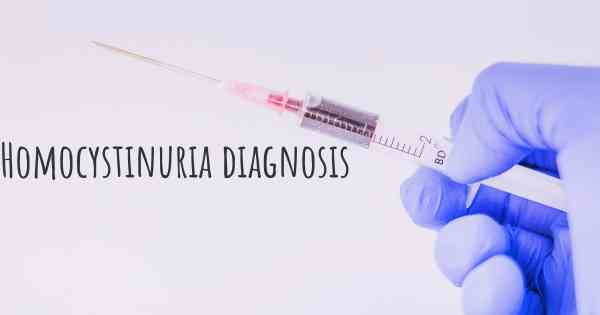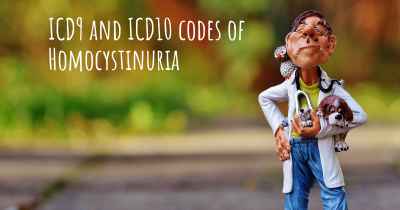How is Homocystinuria diagnosed?
See how Homocystinuria is diagnosed. Which specialists are essential to meet, what tests are needed and other useful information for the diagnosis of Homocystinuria

Diagnosis of Homocystinuria
Homocystinuria is a rare genetic disorder that affects the body's ability to process an amino acid called methionine. It is caused by a deficiency of an enzyme called cystathionine beta-synthase (CBS), which is responsible for converting methionine into another amino acid called cysteine. Without this enzyme, homocysteine levels in the body become elevated, leading to various health problems.
Diagnosing homocystinuria typically involves a combination of clinical evaluation, biochemical testing, and genetic analysis. Early diagnosis is crucial to prevent complications and initiate appropriate treatment.
Clinical Evaluation
The first step in diagnosing homocystinuria is a thorough clinical evaluation. The healthcare provider will review the patient's medical history, including any symptoms or family history of the disorder. They will also perform a physical examination to look for characteristic signs and symptoms associated with homocystinuria.
Characteristic signs and symptoms of homocystinuria include:
- Intellectual disability or learning difficulties
- Eye problems, such as nearsightedness, dislocated lens, or abnormal coloration of the iris
- Skeletal abnormalities, including tall stature, long limbs, and scoliosis
- Thromboembolic events, such as blood clots
- Developmental delays
- Seizures
- Psychiatric disorders
Biochemical Testing
Once clinical suspicion of homocystinuria arises, biochemical testing is performed to measure the levels of homocysteine and methionine in the blood or urine. Elevated levels of homocysteine and methionine are indicative of the disorder.
The following tests are commonly used for biochemical diagnosis:
- Plasma Total Homocysteine: This test measures the total amount of homocysteine in the blood. Elevated levels are suggestive of homocystinuria.
- Plasma Methionine: Methionine levels are typically elevated in individuals with homocystinuria.
- Urine Homocysteine: This test measures the amount of homocysteine excreted in the urine. Elevated levels can indicate homocystinuria.
- Plasma Amino Acid Analysis: This comprehensive test measures the levels of various amino acids in the blood. It can help identify abnormalities associated with homocystinuria.
Genetic Analysis
Confirmation of the diagnosis is usually achieved through genetic analysis. This involves identifying mutations in the CBS gene, which is responsible for producing the cystathionine beta-synthase enzyme. Genetic testing can be performed using a blood sample or other tissue samples.
Genetic analysis includes the following steps:
- Isolation of DNA: DNA is extracted from the patient's blood or tissue sample.
- Gene Sequencing: The CBS gene is sequenced to identify any mutations or abnormalities.
- Mutation Analysis: Identified mutations are compared to known disease-causing mutations to determine their significance.
Genetic analysis not only confirms the diagnosis of homocystinuria but also helps in identifying carriers within the family and providing genetic counseling.
Additional Diagnostic Measures
In some cases, additional diagnostic measures may be necessary to evaluate the extent of organ damage or complications associated with homocystinuria. These may include:
- Eye Examination: An ophthalmologist may perform a detailed eye examination to assess any ocular abnormalities, such as lens dislocation or myopia.
- Cardiovascular Evaluation: A cardiologist may conduct tests to evaluate the heart and blood vessels for any abnormalities or signs of thromboembolic events.
- Skeletal Assessment: X-rays or other imaging techniques may be used to assess skeletal abnormalities, such as scoliosis or long bone overgrowth.
It is important to note that the diagnosis of homocystinuria should be made by qualified healthcare professionals experienced in managing metabolic disorders. Prompt diagnosis and early intervention can significantly improve the long-term outcomes for individuals with homocystinuria.








